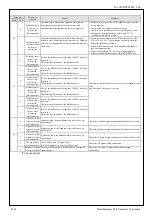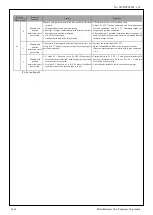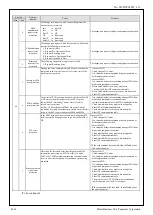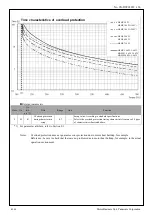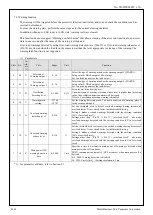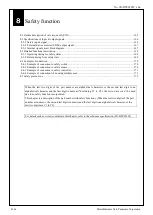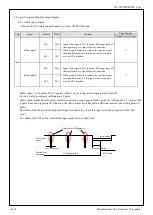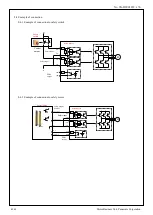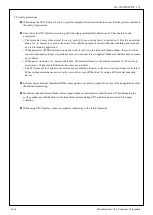
No. SX-DSV02829 -
162-
7-4 Setup of gain pre-adjustment protection
Before starting gain adjustment, set the following parameters based on the conditions of use, to assure safe operation.
1)
Setup of over-travel inhibit input
By inputting the limit sensor signal to the driver, the bumping against mechanical end can be prevented. Refer to
interface specification, positive/negative direction overtravel inhibit input (POT/NOT). Set the following
parameters which are related to overtravel inhibit input.
Pr 5.04 Setup of over-travel inhibit input
Pr 5.05 Sequence at over-travel inhibit
2)
Setup of torque limit
By limiting motor maximum torque, damage caused by failure or disturbance such as bite of the machine and
collision will be minimized. To uniformly limit maximum torque by using the parameter Pr 0.13 1st torque limit,
first set Pr 5.21 Selection of torque limit to 0 or 1.
If the torque limit setup is lower than the value required during the actual application, the following two
protective features will be triggered: over-speed protection when overshoot occurs, and excess positional
deviation protection when response to the command delays.
By allocating the torque in-limit output (TLC) of interface specification to the output signal, torque limit
condition can be detected externally.
3)
Setup of over-speed protection
Generates Err 26.0 Over-speed protection when the motor speed is excessively high.
If your application operates below the motor maximum speed, set Pr 9.10 “Maximum over-speed level” by using
the formula below.
Pr 9.10 “Maximum over-speed level”= Vmax
×
(1.2 to 1.5)
Vmax: motor maximum speed [r/min] in operating condition
Factor in ( ) is margin to prevent frequent activation of over-speed protection.
When running the motor at a low speed during initial adjustment stage, setup the overspeed protection by
multiplying the adjusting speed by a certain margin to protect the motor against possible oscillation.
R1.00
Motor Business Unit, Panasonic Corporation



